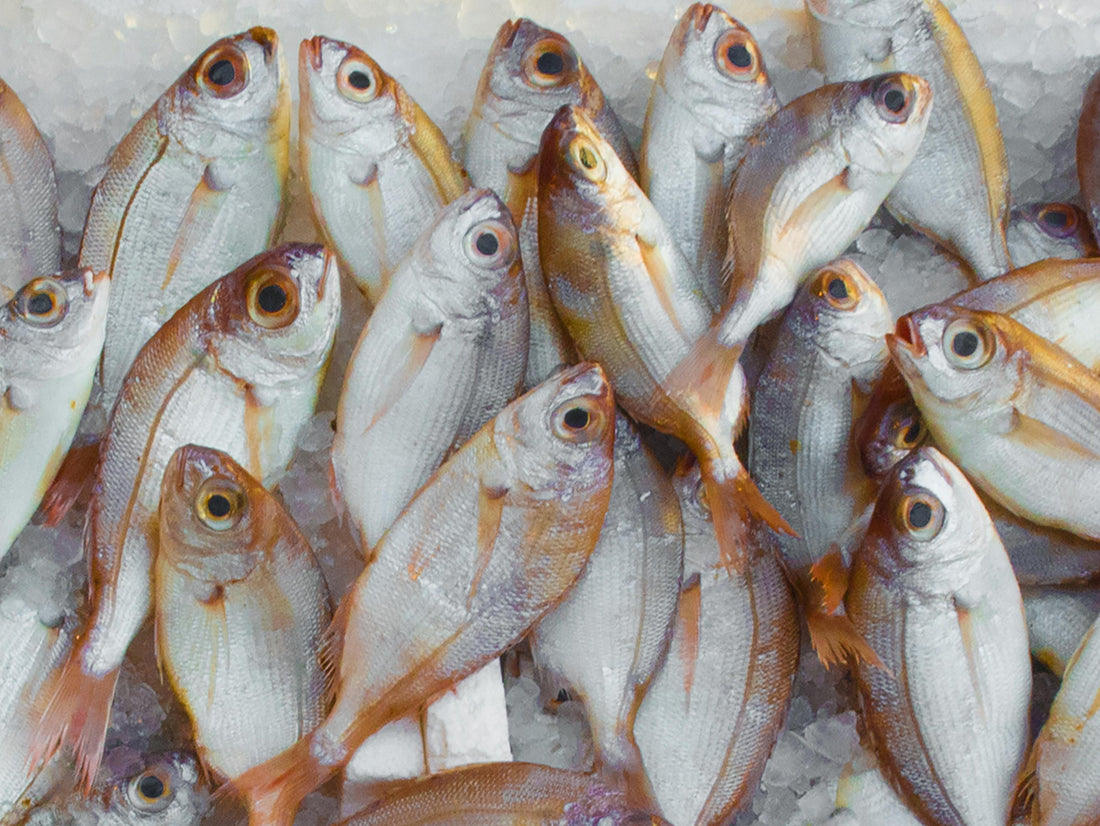You might think your kitchen is stocked with pure, high-quality ingredients—but the truth could be far less appetizing.
Everyday staples like olive oil and honey are some of the most frequently faked foods in the world. From watered-down milk to mislabeled fish, counterfeit products have quietly made their way into stores and homes, often without us noticing a thing.
In this article, we reveal six common foods that are often not what they claim to be—including olive oil, honey, milk, fish, spices, and wine. If you’ve been trusting the label without a second thought, it might be time to take a closer look at what’s really on your plate.
Food counterfeiting happens when a product is misrepresented—whether through substitution, dilution, or deceptive labeling. It’s more common than many people realize, and it often targets everyday items we trust.
Below is a list of six commonly counterfeited food items:
1. Fish
Seafood is one of the most commonly counterfeited food products, with species substitution being the most widespread form of fraud. In many cases, lower-value fish such as tilapia or catfish are mislabeled and sold as more expensive varieties like red snapper or grouper. This deceptive practice not only cheats consumers financially but also poses serious health risks.
Some substituted fish may contain higher levels of mercury, industrial contaminants, or naturally occurring toxins. Additionally, mislabeled seafood can trigger allergic reactions, especially when individuals unknowingly consume species they’re sensitive to. Poorly handled or previously frozen fish passed off as fresh may also harbor harmful bacteria, increasing the risk of foodborne illness.
2. Extra Virgin Olive Oil
Extra virgin olive oil (EVOO) has been a target of food fraud for centuries, dating back to ancient Rome when counterfeiters would sell low-quality oil as the premium product. Today, despite the global demand for authentic EVOO, fraud remains rampant.
Most high-quality EVOO originates from regions like Spain, Italy, and Greece, where olives are carefully harvested without the use of heat or chemicals. The process involves shaking ripe olives from trees, grinding them into a thick paste, and then extracting the oil through spinning and pressing. A genuine bottle of premium EVOO can cost up to $10 for just 17 ounces.
However, the rise of fraudulent operations has made it challenging for consumers to distinguish authentic EVOO from counterfeit products. Many so-called “extra virgin” oils are actually blends of inferior oils or heavily processed versions. This can introduce several health risks, including an increased intake of unhealthy oils such as soybean or sunflower oil, which can contribute to inflammation and heart disease. Some fake oils may also contain harmful chemicals or preservatives used in the blending process, which can undermine the health benefits typically associated with EVOO, such as its antioxidant properties and its positive impact on cholesterol levels.
To avoid falling victim to this fraud, experts recommend steering clear of oils labeled as “Blend” or “Light.” Additionally, look for an “Extra Virgin” label and a harvest date that is less than a year old, as EVOO loses its characteristic fresh, grassy flavor after about two years.
3. Spices (Saffron, Cinnamon, and Black Pepper)
Spices like saffron, cinnamon, and black pepper are often targeted by food fraudsters who dilute them with cheaper ingredients such as starch, filler powders, or artificial dyes. For example, genuine saffron, which is derived from the delicate stigma of the saffron crocus flower, can cost up to $2,000 per pound. However, fraudulent versions are frequently found mixed with additives like onion skins or orange dye to mimic the appearance of authentic saffron at a fraction of the cost.
This adulteration not only diminishes the flavor and potency of these spices but also presents health risks. Some additives used in counterfeit spices may lead to allergic reactions, digestive issues, or other adverse health effects. Additionally, consuming artificially colored or processed spices could expose consumers to harmful chemicals that are not meant for human consumption.
4. Dairy Products
Milk and cheese are common targets for food fraud, with counterfeiters often diluting milk with water or replacing natural fats with cheaper alternatives. These fraudulent dairy products not only compromise the nutritional value, missing out on essential nutrients like calcium and vitamin D, but can also lead to serious health complications.
One of the most notorious cases of dairy fraud occurred during the 2008 Chinese infant formula scandal, where 54,000 infants fell ill, and tragically, six died after consuming milk contaminated with melamine—a harmful chemical used to falsely inflate protein content. This incident highlighted the devastating consequences of food adulteration and the dangers posed by substandard dairy products.
5. Wine
Wine is another luxury food product that is particularly vulnerable to counterfeiting. As a highly sought-after commodity, it is often targeted by fraudsters who mix inferior or even hazardous ingredients into the wine and label it as a premium vintage to command higher prices. It’s estimated that 20% of the wine sold worldwide is counterfeit, with some bottles being sold for hundreds or even thousands of dollars.
This fraudulent practice not only compromises the flavor and quality of the wine but also poses significant health risks. In some instances, counterfeit wine has been found to contain toxic substances like methanol, a chemical that can lead to poisoning, causing symptoms ranging from nausea to blindness or even death. Such adulteration also undermines the health benefits of authentic wine, including its antioxidant properties.
6. Honey
Honey may seem like an unlikely candidate for food fraud, but recent estimates suggest that up to one-third of globally traded honey is counterfeit. The growing global demand for honey far exceeds what bees can naturally produce, and much of the fake honey originates in China, which is also the world’s largest honey supplier. To meet demand, producers often blend pure honey with cheaper alternatives like corn syrup, glucose, or sugars from rice, cane, or beets.
This adulteration not only compromises the flavor and quality of honey but also removes its valuable nutritional properties. Genuine honey is rich in antioxidants, enzymes, and antibacterial properties, but these benefits are often destroyed when honey is processed or mixed with artificial ingredients. The resulting product is little more than sugar syrup, which can lead to blood sugar spikes, weight gain, and contribute to insulin resistance when consumed in excess.
Despite this, the fake honey still has some uses, such as in skin and hair care treatments. However, for those seeking the health benefits of true honey, it is essential to purchase from trusted sources and look for honey labeled as raw, organic, or unfiltered.
Luxury in a Bottle? The $30 Million Wine Fraud That Fooled the World
Wine counterfeiting made global headlines in 2014 when Rudy Kurniawan, a well-known wine collector, was convicted for orchestrating one of the biggest wine scams in history. Kurniawan created counterfeit vintage wines in his California home, blending inexpensive wines and reusing old bottles with custom-made labels to mimic rare and expensive vintages.
Some of his fake bottles were sold for tens of thousands of dollars each at prestigious auctions, deceiving elite collectors and connoisseurs alike. The scam, which totaled over $30 million, was so elaborate that it was featured in the documentary Sour Grapes.
This case exposed just how vulnerable the luxury wine market is to fraud and prompted the industry to implement stricter controls, such as authentication technology and supply chain tracking. Yet, experts warn that counterfeit wine still circulates, particularly in poorly regulated markets—making it one of the world’s most faked food and drink products.
Conclusion: Addressing the Hidden Cost of Fake Food
Food fraud is not just a matter of deception—it presents a serious threat to both consumers and legitimate businesses. For consumers, the consequences range from potential health hazards, such as exposure to harmful chemicals or allergens, to the loss of essential nutrients in counterfeit products. People often believe they’re buying something pure and beneficial, only to receive something diluted, artificial, or even dangerous.
For honest producers and marketers, fake food products damage brand reputation, reduce consumer confidence, and create unfair competition in the marketplace. These issues can lead to financial losses and undermine the efforts of those committed to quality and safety.
Combating food fraud requires a collective response. Regulatory bodies need to enhance oversight, testing, and supply chain transparency, while advancements in technology—like blockchain tracking and lab-based ingredient verification—can help detect and prevent fraud. Meanwhile, consumers play an important role by choosing trusted brands, reading labels carefully, and staying informed about the risks of food fraud.
Ultimately, awareness and vigilance are the first steps toward reducing food fraud and ensuring that what we eat is safe, authentic, and honestly represented.

